Hey, fellow mommys! 🌿✨ Today, I’m super excited to share with you one of my favorite DIY projects: nature sensory bottles aka discovery bottles or calm down jars. These little bottles are perfect for bringing the outdoors inside, no matter the season.
(And collecting the material outside is a lot of fun too!) They’re a fantastic way for kids (and let’s be real, adults too) to explore the sights, sounds, and textures of nature in a fun and interactive way. So, grab your bottles and let’s dive into the wild world of nature sensory bottles! 🌸🍁🌞
- What Are Nature Sensory Bottles?
- Materials You’ll Need
- DIY Nature Sensory Bottle Ideas
- 1. Springtime Bliss Bottle 🌸
- 2. Summer Beach Bottle 🌞
- 3. Autumn Harvest Bottle 🍁
- 4. Winter Wonderland Bottle ❄️
- DIY Biome Sensory Bottle Ideas
- 5. Tropical Rainforest Bottle 🌴🌺
- 6. Evergreen Forest Bottle 🌲🌿
- Sensory bottle ideas on life in the forest.
- 11. Mushroom Sensory Bottle 🍄
- 12. Moss Sensory Bottle 🌿
- 13. Acorn Sensory Bottle 🌰
- 14. Forest Floor Sensory Bottle 🍂
- 15. Bird Nest Sensory Bottle 🐦
- 16. Pine Cone Sensory Bottle 🌲
- 17. Stream in the Forest Bottle 🌊
- 18. Forest Flowers Sensory Bottle 🌸
- 19. Forest Animals Sensory Bottle 🦉
- More Sensory Bottle Ideas
- Pin it for Later
- Why Make Nature Sensory Bottles?
- Tips for Making the Best Nature Sensory Bottles
- How to Keep Sensory Bottles from Leaking
- How to Keep a Sensory Bottle from Molding
- Educational Activities with Nature Sensory Bottles
- Wrapping Up
- What To Read Next:
What Are Nature Sensory Bottles?
Nature sensory bottles are containers filled with natural elements that represent the different seasons and their unique characteristics. They can include anything from leaves and flowers to seashells and rainwater. These bottles are perfect for sensory play, helping kids develop their observational skills and a deeper appreciation for nature.

Materials You’ll Need
To get started, you’ll need a few basic supplies:
- Empty plastic bottles (water bottles, mason jars, etc.) I like the smoothie bottles from Aldi. They are the perfect size for Luca’s little hands. Better yet are the ingwer shot bottles cause I need a lot less of the baby oil.
- Glue gun or strong glue (to seal the bottles)
- Decorative materials (stickers, washi tape, etc.)
- Funnels (for easier filling)

For the fillings, the options are endless! Here are some ideas, organized by season:
Spring Sensory Bottles 🌸
- Fresh flowers (dandelions, daisies, cherry blossoms)
- Grass clippings
- Tiny pebbles
- Water with a drop of food coloring (to represent spring rain)
Summer Sensory Bottles🌞
- Sand
- Seashells
- Small beach toys (mini beach balls, umbrellas)
- Blue food coloring in water (to represent the ocean)
Autumn Sensory Bottles🍁
- Colorful leaves
- Acorns
- Pine cones
- Small twigs
- Dried corn kernels
Winter Sensory Bottles ❄️
- Cotton balls (to represent snow)
- Silver glitter (for a frosty effect)
- Small pine branches
- Tiny jingle bells
For More Ideas Check Easy Winter Sensory Bottles.
DIY Nature Sensory Bottle Ideas
Let’s get to the fun part – making the sensory bottles! Here are some step-by-step ideas for each season:
1. Springtime Bliss Bottle 🌸
Materials:
- Fresh flowers (dandelions, daisies, cherry blossoms)
- Grass clippings
- Small pebbles
- Water with a drop of green food coloring
Instructions:
- Fill the bottle halfway with water and add a drop of green food coloring.
- Add in the fresh flowers, grass clippings, and small pebbles.
- Seal the bottle tightly with glue.
Vibe: This bottle captures the essence of a fresh, blooming garden. The flowers and grass create a beautiful, colorful scene that’s perfect for spring. 🌼
2. Summer Beach Bottle 🌞
Colored rice is a sensory staple and can be used in various crafts and activities. Sadly Luca still likes to put it in his mouth so I’d recommend it for older toddlers.
Materials:
- Sand
- Seashells
- Small beach toys
- Blue food coloring in water
Instructions:
- Start by adding a layer of sand at the bottom of the bottle.
- Add seashells and small beach toys.
- Fill the bottle with water and add a few drops of blue food coloring. (For this one I used baby oil and no color, I feel like the objects move better in oil!)
- Seal the bottle tightly with glue.
Vibe: This bottle is like a mini beach vacation! The sand, seashells, and blue water make it feel like you’re right by the ocean. 🏖️
3. Autumn Harvest Bottle 🍁
Ingredients:
- Colorful leaves
- Acorns
- Pine cones
- Small twigs
- Dried corn kernels
Instructions:
- Add a mix of colorful leaves, acorns, and pine cones to the bottle.
- Add some small twigs and dried corn kernels.
- Seal the bottle tightly with glue.
Vibe: This bottle captures the warm, cozy feel of autumn with its rich colors and natural elements. Perfect for exploring the beauty of fall! 🍂
4. Winter Wonderland Bottle ❄️
Materials:
- Cotton balls
- Silver glitter
- Small pine branches
- Tiny jingle bells
Instructions:
- Start with a layer of cotton balls at the bottom of the bottle.
- Add silver glitter for a frosty effect.
- Insert small pine branches and tiny jingle bells.
- Seal the bottle tightly with glue.
Vibe: This bottle brings the magic of winter indoors with its snowy scene and glittery frost. Shake it up and enjoy the winter wonderland! ⛄
DIY Biome Sensory Bottle Ideas
By creating sensory bottles themed around various biomes, you can help kids learn about the diversity of life on Earth in a hands-on, interactive way. Let’s dive into some fun ideas for nature biome sensory bottles!
5. Tropical Rainforest Bottle 🌴🌺
Materials:
- Green-tinted water or clear water with green food coloring
- Small plastic animals (monkeys, parrots, frogs)
- Fake leaves and tiny flowers
- Glitter (optional, for a magical effect)
Instructions:
- Fill the bottle with green-tinted water.
- Add small plastic rainforest animals, fake leaves, and tiny flowers.
- Optionally, add some glitter for a bit of sparkle.
- Seal the bottle tightly with glue and tape.
Learning Points:
- Discuss the high biodiversity of rainforests.
- Talk about the canopy layers and the animals that live in each layer.
- Explore the importance of rainforests for oxygen production and climate regulation.
For more stunning visual effects, you might also enjoy our layered sensory bottles. They can add an extra dimension to your nature-themed creations!
6. Evergreen Forest Bottle 🌲🌿
Materials:
- Green glitter glue or clear glue with green food coloring
- Small plastic evergreen trees
- Pine cones (small enough to fit in the bottle)
- Green glitter
Instructions:
- Fill the bottle with green glitter glue or clear glue mixed with green food coloring.
- Add small plastic evergreen trees and tiny pine cones.
- Sprinkle in some green glitter for sparkle.
- Seal the bottle tightly with glue and tape to prevent leaks.
Learning Points:
- Discuss the types of trees found in evergreen forests and their characteristics.
- Talk about the seasons in an evergreen forest and how they differ from deciduous forests.
- Explore the animals that live in these forests and their adaptations.
7. Desert Bottle 🏜️🌵
Materials:
- Sand
- Small pebbles or rocks
- Tiny plastic desert animals (lizards, camels, scorpions)
- A few drops of yellow food coloring in clear oil for a sunny effect
Instructions:
- Add a layer of sand to the bottom of the bottle.
- Place small pebbles and tiny plastic desert animals on top of the sand.
- Fill the rest of the bottle with clear oil and add a few drops of yellow food coloring.
- Seal the bottle tightly with glue and tape.
Learning Points:
- Discuss the harsh conditions of the desert and how plants and animals adapt to survive.
- Explore the role of deserts in the ecosystem and their unique climate.
- Talk about the importance of water conservation.
8. Arctic Tundra Bottle ❄️🐻❄️
Materials:
- Clear water or water with a few drops of blue food coloring
- Fake snow or white glitter
- Small plastic arctic animals (polar bears, seals, penguins)
- Tiny pieces of white foam or cotton for icebergs
Instructions:
- Fill the bottle with clear or blue-tinted water.
- Add fake snow or white glitter for the snow effect.
- Place small plastic arctic animals and tiny pieces of white foam or cotton inside.
- Seal the bottle tightly with glue and tape.
Learning Points:
- Discuss the cold, harsh climate of the Arctic tundra.
- Talk about the animals that live there and how they adapt to the extreme cold.
- Explore the impact of climate change on the Arctic environment.
9. Grassland Bottle 🌾🦓
Materials:
- Clear water
- Green food coloring
- Small plastic grassland animals (zebras, lions, elephants)
- Fake grass or green shredded paper
Instructions:
- Fill the bottle with clear water and add a few drops of green food coloring.
- Add small plastic grassland animals and fake grass or green shredded paper.
- Seal the bottle tightly with glue and tape.
Learning Points:
- Discuss the wide-open spaces and seasonal changes in grasslands.
- Talk about the animals that live in grasslands and their diets.
- Explore the role of grasslands in supporting large herds of grazing animals.
10. Ocean Bottle 🌊🐠
Materials:
- Clear water with blue food coloring, and baby oil
- Small plastic ocean animals (fish, dolphins, sea turtles)
- Shells, sand, and seaweed-like materials
- Glitter for a sparkling ocean effect
Instructions:
- Fill the bottle with clear water and add blue or green food coloring.
- Add small plastic ocean animals, shells, sand, and seaweed-like materials.
- Add baby oil.
- Optionally, add glitter for a sparkling effect.
- Seal the bottle tightly with glue and tape.
Learning Points:
- Discuss the different layers of the ocean and the animals that live in each.
- Talk about the importance of oceans for the planet’s health.
- Explore topics like coral reefs, marine conservation, and the water cycle.

Sensory bottle ideas on life in the forest.
11. Mushroom Sensory Bottle 🍄
Materials:
- Clear water or clear glue
- Small plastic mushrooms or mushroom stickers
- Red and white glitter
- Tiny pebbles or sand (for the forest floor)
Instructions:
- Fill the bottle with clear water or clear glue.
- Add small plastic mushrooms or mushroom stickers.
- Sprinkle in red and white glitter.
- Add a layer of tiny pebbles or sand at the bottom.
- Seal the bottle tightly with glue and tape.
Learning Points:
- Discuss the role of mushrooms in the forest ecosystem, including their function in decomposition and nutrient cycling.
- Explore different types of mushrooms and their unique characteristics.
12. Moss Sensory Bottle 🌿
Materials:
- Clear water or clear glue
- Dried moss
- Small plastic insects or tiny animal figures (e.g., frogs, beetles)
- Green glitter
Instructions:
- Fill the bottle with clear water or clear glue.
- Add artificial moss.
- Place small plastic insects or tiny animal figures inside.
- Sprinkle in green glitter.
- Seal the bottle tightly with glue and tape.
Learning Points:
- Discuss how mosses grow and their role in the forest floor.
- Explore the types of insects and small animals that live among the moss.
13. Acorn Sensory Bottle 🌰
Materials:
- Clear water or clear glue
- Small acorns or acorn caps
- Brown glitter
- Tiny twigs or dried leaves
Instructions:
- Fill the bottle with clear water or clear glue.
- Add small acorns or acorn caps.
- Sprinkle in brown glitter.
- Add tiny twigs or dried leaves.
- Seal the bottle tightly with glue and tape.
Learning Points:
- Discuss the importance of acorns as a food source for forest animals.
- Explore the life cycle of oak trees and their role in the forest.
14. Forest Floor Sensory Bottle 🍂
Materials:
- Clear water or clear glue
- Dried leaves, small twigs, and pine needles
- Small plastic insects (e.g., ants, beetles)
- Brown and green glitter
Instructions:
- Fill the bottle with clear water or clear glue.
- Add dried leaves, small twigs, and pine needles.
- Place small plastic insects inside.
- Sprinkle in brown and green glitter.
- Seal the bottle tightly with glue and tape.
Learning Points:
- Discuss the various layers of the forest floor and their significance.
- Explore the types of insects and decomposers that thrive in this environment.
15. Bird Nest Sensory Bottle 🐦
Materials:
- Clear water or clear glue
- Small plastic bird figures
- Artificial nest materials (e.g., straw, raffia)
- Blue and green glitter (optional)
Instructions:
- Fill the bottle with clear water or clear glue.
- Add small plastic bird figures.
- Place artificial nest materials inside.
- Optionally, sprinkle in blue and green glitter.
- Seal the bottle tightly with glue and tape.
Learning Points:
- Discuss how birds build nests and the materials they use.
- Explore the types of birds commonly found in forests and their nesting habits.
16. Pine Cone Sensory Bottle 🌲
Materials:
- Clear water or clear glue
- Small pine cones
- Green and brown glitter
- Tiny fake pine needles
Instructions:
- Fill the bottle with clear water or clear glue.
- Add small pine cones.
- Sprinkle in green and brown glitter.
- Add tiny fake pine needles.
- Seal the bottle tightly with glue and tape.
Learning Points:
- Discuss the role of pine cones in the life cycle of pine trees.
- Explore the types of animals that use pine cones for food or shelter.
17. Stream in the Forest Bottle 🌊
Materials:
- Clear water with blue food coloring
- Small plastic fish or amphibian figures
- Tiny pebbles and sand
- Blue and silver glitter (optional)
Instructions:
- Fill the bottle with clear water tinted with blue food coloring.
- Add small plastic fish or amphibian figures.
- Place tiny pebbles and sand at the bottom.
- Optionally, sprinkle in blue and silver glitter.
- Seal the bottle tightly with glue and tape.
Learning Points:
- Discuss the importance of streams and rivers in forest ecosystems.
- Explore the types of aquatic life commonly found in forest streams.
18. Forest Flowers Sensory Bottle 🌸
Materials:
- Clear water or clear glue
- Forest flower petals
- Pink, yellow, and white glitter
- Small plastic insects (e.g., bees, butterflies)
Instructions:
- Fill the bottle with clear water or clear glue.
- Add fake flowers or flower petals.
- Sprinkle in pink, yellow, and white glitter.
- Place small plastic insects inside.
- Seal the bottle tightly with glue and tape.
Learning Points:
- Discuss the variety of wildflowers found in forests and their blooming seasons.
- Explore the role of flowers in the forest ecosystem, including pollination.
19. Forest Animals Sensory Bottle 🦉
Materials:
- Clear water or clear glue
- Small plastic forest animals (e.g., owls, deer, squirrels)
- Dried leaves and tiny twigs
- Brown and green glitter
Instructions:
- Fill the bottle with clear water or clear glue.
- Add small plastic forest animals.
- Place dried leaves and tiny twigs inside.
- Sprinkle in brown and green glitter.
- Seal the bottle tightly with glue and tape.
Learning Points:
- Forest Habitats: Discuss the different animals that live in the forest and their roles in the ecosystem. Explain how these animals find food, shelter, and interact with each other.
- Adaptations: Talk about how each animal is adapted to the forest environment. For example, owls have excellent night vision, and squirrels are adept at climbing trees.
- Ecosystem: Explore how these animals contribute to the health and balance of the forest ecosystem. For instance, squirrels help in seed dispersal, which aids in forest regeneration.
More Sensory Bottle Ideas
If you’re looking for more inspiration beyond nature-themed bottles, check out these 13 magical sensory bottles for toddlers. They’re perfect for sparking creativity and adding a touch of magic to playtime.
For holiday fun, check out these Christmas Sensory Bottles or our guide to DIY sound sensory bottles that engage another one of your toddler’s senses.
Need help gathering materials? Check out Where to Find the Best Sensory Materials.
Pin it for Later

📌 Pin now, read later! Save our guide on Pinterest and share the joy of sensory play with your friends and family. Click the link below and start crafting unforgettable memories with your little ones.
Why Make Nature Sensory Bottles?
Before we jump into the how-to, let’s talk about the why:
Calming and Soothing: Watching and listening to the material in the bottles can be very calming and meditative. Learn how to use sensory play to teach emotions with These Activities about emotions.
Connection with Nature: They help kids (and adults) feel more connected to nature, even when they can’t be outside.
Sensory Development: Engaging multiple senses through sight, sound, and touch aids in sensory development.
Seasonal Learning: They’re a great tool for teaching kids about the different seasons and the changes that occur in nature.
Tips for Making the Best Nature Sensory Bottles
Here are some tips to ensure your nature sensory bottles are a hit:
- Test the Look and Sound: Before sealing, shake and observe the bottle to make sure you’re happy with the contents. You can always add more or take some out.
- Decorate the Bottles: Make the bottles visually appealing by adding stickers, washi tape, or painting the caps. This adds another layer of sensory fun!
- Supervise Younger Kids: While these bottles are generally safe, always supervise younger kids to ensure they don’t try to open the bottles or put small pieces in their mouths.
How to Keep Sensory Bottles from Leaking
Choose Quality Bottles: Use sturdy bottles designed to hold liquids securely. Bottles with screw-top lids are preferable.
Properly Seal the Cap:
- Glue: Apply a strong adhesive like hot glue, super glue, or E6000 to the threads of the bottle neck before screwing on the cap.
- Tighten the Cap: Screw the cap on as tightly as possible, ensuring there are no gaps.
Use Waterproof Tape: After sealing with glue, wrap waterproof tape (such as duct tape or packing tape) around the bottle neck and cap. This adds an extra layer of protection against leaks.
Test for Leaks: Before giving the bottle to your child, turn it upside down and shake it to check for any leaks. If you find any, reapply glue and tape as needed.
Avoid Overfilling: Leave a small amount of space at the top of the bottle. Overfilling can cause pressure that may lead to leaks.
How to Keep a Sensory Bottle from Molding
Ok this really bothered me. I was wondering if I make those beautiful nature bottles will they turn into a different kind of biologics experiment? So far so good instead of water I used oil. (I did one with water, I boiled the water before putting the dried materials, I’ll keep you updated how that goes.)
Dry Organic Materials Thoroughly: Ensure any organic materials are completely dry before adding them to the oil. You can press and leave them in a dry, warm place for a few days to ensure they’re fully dried.
Use Preservatives: While oil itself doesn’t support mold growth, you can still use natural preservatives like dried rosemary or thyme, which have antimicrobial properties.
Choose Stable Oils: Use oils with a long shelf life and low susceptibility to rancidity, such as mineral oil or baby oil. These oils are less likely to break down and cause mold.
Seal Properly: Ensure that the sensory bottle is sealed tightly to prevent any air (which can carry mold spores) from entering. Use strong adhesive on the threads of the bottle cap and consider wrapping the cap with tape.
Regular Inspection: Periodically check the sensory bottles for any signs of mold or decomposition. If you notice any mold, remove the contents, clean the bottle thoroughly, and start fresh.
Educational Activities with Nature Sensory Bottles
Now that you’ve made your nature sensory bottles, here are some educational activities you can try:
– Seasonal Sorting Game
Create bottles for each season and have the kids sort various natural items into the correct seasonal bottle. This helps them learn about the different characteristics of each season.
– Nature Scavenger Hunt
Take the bottles outside and have a scavenger hunt to find similar items in nature. This encourages exploration and observation skills.
– Storytelling with Nature
Use the bottles as props to tell a story about the changing seasons. For example, use the autumn bottle to talk about why leaves change color and fall from the trees.
– Sensory Exploration
Encourage kids to shake, roll, and observe the bottles while describing what they see, hear, and feel. This helps with language development and sensory awareness.
Crafting with Your Toddler
Crafting sensory bottles is a fantastic way to spend quality time with your little ones while nurturing their development. If you’re looking for more sensory play crafts, check out our post on sensory play crafting with toddlers. It’s packed with creative ideas to start crafting with your toddler, providing them with hours of fun and learning.
Wrapping Up
There you have it – a complete guide to making and using nature sensory bottles! 🌿🌸🍁❄️ These bottles are not only fun to make but also offer a wonderful way for kids to explore their senses and learn about the natural world. Whether you’re a parent, teacher, or just someone who loves DIY projects, nature sensory bottles are a fantastic addition to your activity repertoire.
So, grab those empty bottles and get creative! Your kids (and you) will have a blast making and playing with these sensory delights. Don’t forget to share your creations with me – I’d love to see what amazing bottles you come up with! You might also check this roundup post on nature sensory bottles.
Happy crafting! ✂️✨




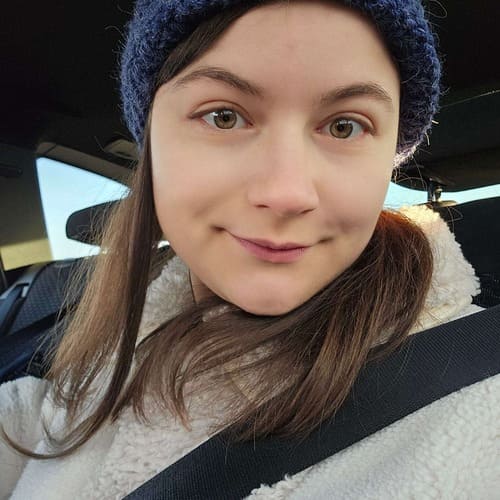
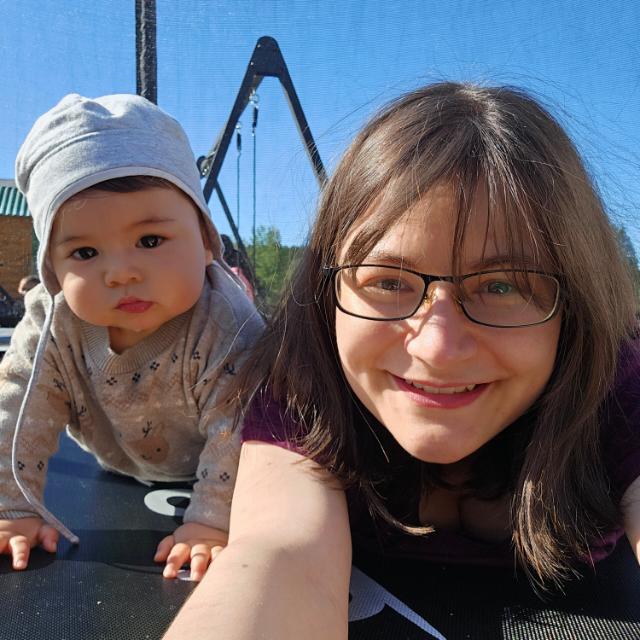

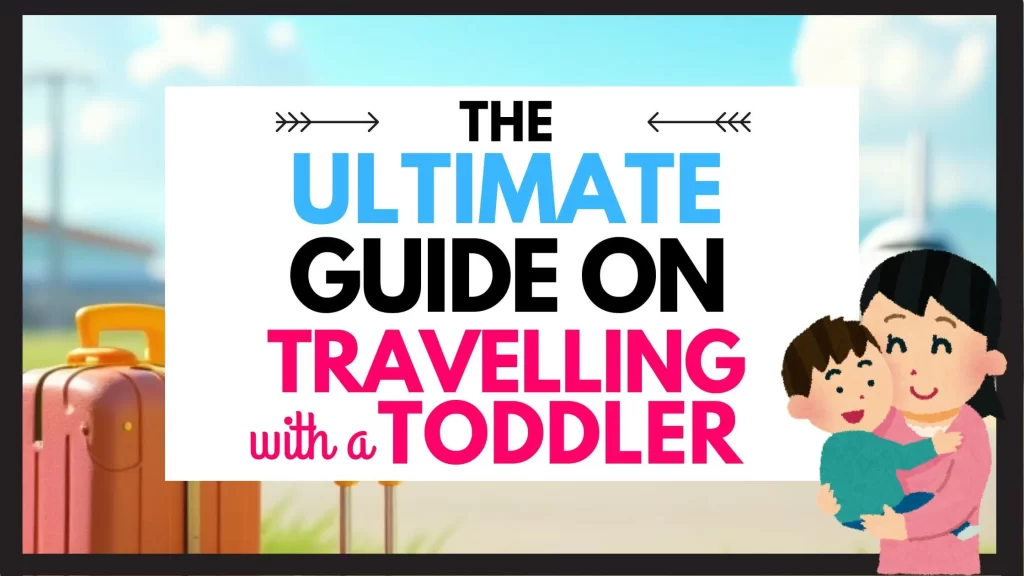
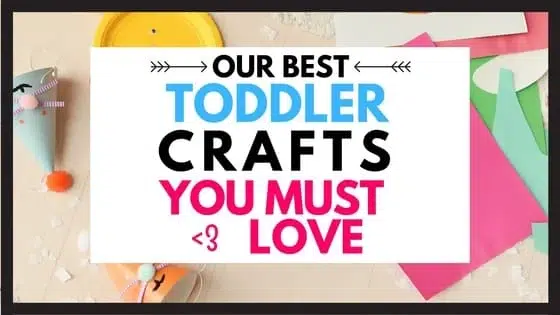


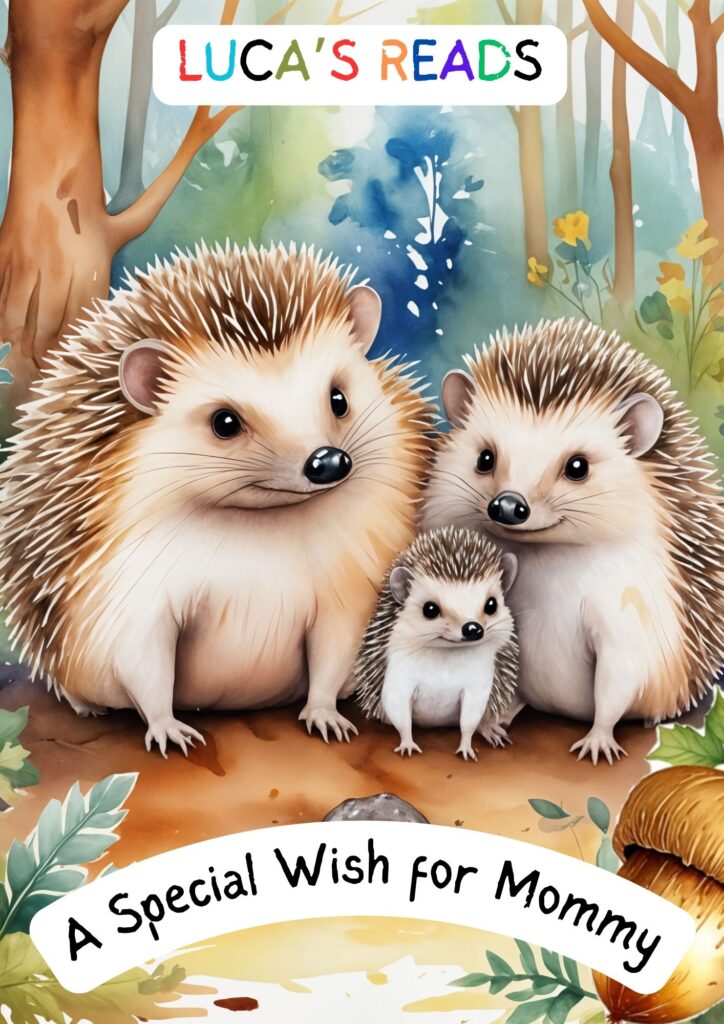
Leave a Reply